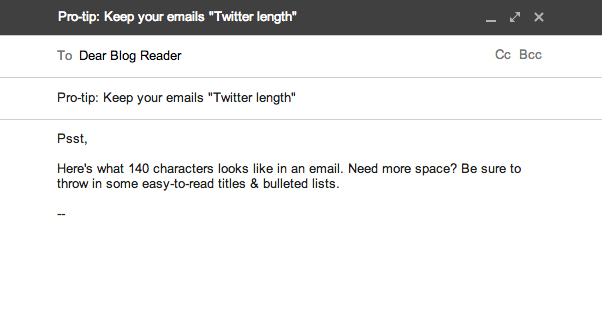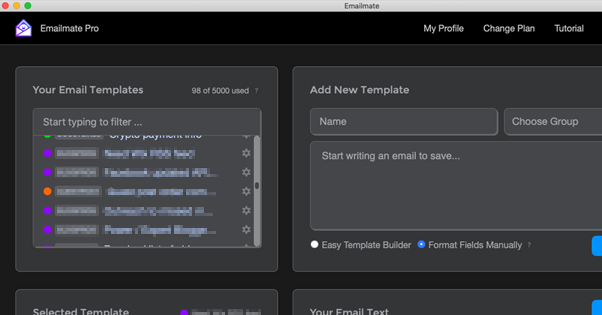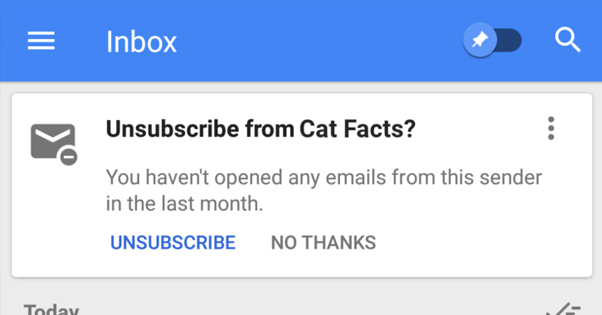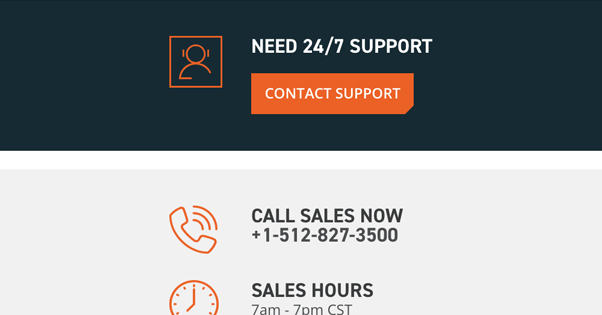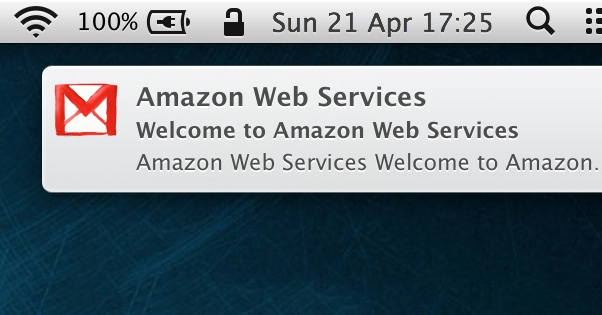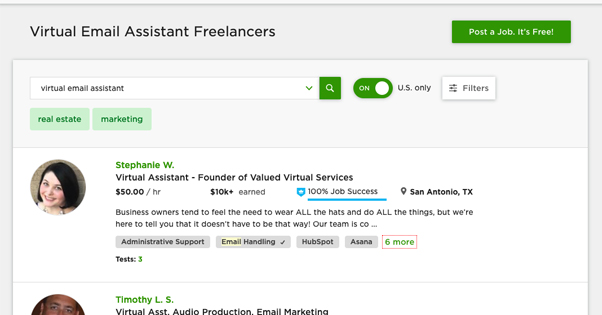15 Ways to Spend Less Time on Writing Emails

You’ve probably seen the statistics before. How much time are you spending on emails every day, every week? Some people say they’re spending 11 hours a week. Some say 2.5 hours a day. Some say more, some say less. Everyone I know feels like they spend too much time on emails, and not enough time on more important work. It’s why concepts like Inbox Zero are so popular, and it’s why so many email management apps are focused on productivity hacks.
I’ve struggled with spending far too much time on email myself, and over the years, I’ve developed a handful of techniques to speed up my email time, cut down on writing time, and generally spend less time in the inbox. Here are my favorites.
1. Adopt a Shorter Style
One key to effective email communication is to avoid crafting lengthy sentences that have an appearance similar to the one you are reading currently. In other words, keep your emails short.
One of the common problems I see in emails is unclear communication. One person asks three questions, the second person answers one of them, and then you need to go back and forth for a week to get everything sorted out. Partly it’s due to long emails muddling the questions, and partly it’s because everyone is harried and doesn’t have the time to dedicate to reading every email in detail.
When you’re writing an email, keep the message short. When you’re responding to an email, limit your response to just the information that needs to be conveyed. If you feel like you need to say more, limit that urge.
It’s difficult at first, and you’ll definitely run into cases where you’ll leave out crucial information and get into the same back-and-forth problem. Once you’re more used to the style, though, you’ll be able to pull it off more fluidly.
2. Make Use of Template Responses
Templates or canned responses are an incredible time saver, if and only if you set them up right. There’s the mechanical instructions for setting them up that vary according to your client, of course, but there’s also the need to set up responses that work for you, and keep them organized.
Whenever you’re writing a message you’ve written before, save it. Whenever you think you need a common response, save a template. Most importantly, though, make sure all of your templates are customizable in just the right ways, and make sure they all have the right descriptive names.
More than once I’ve found myself in a trap where I have too many templates. Sorting through them takes more time than just writing the message would have taken in the first place. That’s why I made my own custom system, for one thing, and it’s why I’m sharing it with you. It’s also why you need to prune your templates aggressively.
3. Avoid Responding to Unnecessary Messages
You’re going to encounter a lot of emails that simply aren’t important. It’s tricky, but you need to train yourself to avoid replying to messages that don’t need a reply.
- When a message goes to you and a coworker, and the coworker is better suited to respond, let them. Don’t shoot off a “well Steve will know better than I would” message.
- When a message comes in that’s not really important enough to respond to, let it languish or file it away. If it becomes more important, someone will contact you in another way.
Eventually, you’ll develop a sense of when a message isn’t going to be useful. This happens a lot in IT, for example; someone submits a ticket at the first sign of a problem, but fix it themselves – or it’s a time-related problem that will fix in an hour on its own, or whatever – so there’s no real reason for you to respond. Unless, of course, your boss is leaning down your neck over it. Though, I suppose getting fired is one way to no longer need to respond to business emails.
4. Unsubscribe from Annoying Lists
Unsubscribing aggressively is a good way to cut down on your email time. Sure, you’re not going to be writing responses to newsletters, but that doesn’t matter. An incoming newsletter triggers a notification, you check your inbox, and before you know it, an hour has passed. Unsubscribe to every newsletter you don’t need to read for your job, and even then, if you can send them to another email address you can check at your leisure, do so.
It sucks that Unroll.me was outed as a data scraper that sold user data, since it’s no longer a viable option for removing all your mailing list subscriptions. On the other hand, there are a number of good alternatives, which I wrote about here.
5. Take the Time to Disconnect
Part of the problem with email is that it follows you home. In my mind, there are very few reasons to check your email outside of business hours. If you’re the only one handling support and you’re being paid to be on call, that works. If you’re a sole business owner and need to be aware of what’s going on at all times, that’s a valid reason. For most of you, though, you really don’t need to check your email on your lunch break, during your commute, or before you go to bed. 99% of the time, your company will survive a few hours for you to get into work the next day.
6. Turn to the Phones
There’s a trend, especially among millennials and younger workers, to avoid the phones in favor of text-based communication. All too often, this translates into email, and then you end up in a situation where a two minute phone call is replaced by half an hour spent on sixteen emails back and forth.
Don’t be afraid to pick up the phone to sort out an issue that would take much longer in text form. Alternatively, if you’re in a business that can set up a live chat system, or even just use something like Slack internally, do so; the instant messaging channel is a lot faster and easier to handle in a short amount of time than email ends up being.
7. Provide Alternative Contact Methods
To facilitate the previous point, especially for customer-facing issues, provide alternative means of contact. If email is the only way anyone can contact you, of course you’re going to be spending a lot of time with email. Provide a business phone number. Use a website chat system. Be responsive to Facebook messages and Twitter DMs. Make it clear that people can contact you in ways other than via email if they want an immediate solution, and that email should only be used for non-critical messages.
8. Ignore CCed Emails (Generally)
The vast majority of the time, when you get an email that has you in the CC or BCC field, it’s not a message you need to care about. You will know if your organization has special exceptions to that rule, of course. I find that CCs generally indicate that you’re only there to be a witness and, as many witnesses tend to do, you can simply stop paying attention.
The only reason I don’t advocate for establishing a filter to auto-hide all CCed messages – and all forwarded messages for that matter – is because of the few cases where it becomes truly important. Even then, you can always set aside half an hour every week to check a CC folder and make sure there’s nothing there you really need.
9. Disable Email Alerts and Notifications
This is a big one, and it helped me a lot when I need to get other work done. Disable your notifications, particularly desktop notifications, and mute them on your phone. If you can use a timed mute for while you’re working, that’s fine, or you can just turn them off entirely. I’ve seen some people advocate removing the email app from your phone’s desktop entirely, burying it in your app list instead. Use whichever method works best for you.
The problem with notifications is that they interrupt whatever you were doing. If you keep notifications on, whenever a new message comes in, it distracts you. Studies have shown that a distraction can take as long as 15-30 minutes or more to recover from, even if it was only a 3-minute email exchange.
10. Don’t Be Afraid to Delegate
This is especially important for customer service. If you can hire someone or partner with someone to handle your customer service, or at least your basic service issues, do so. You can save a ton of time in doing so. When an email with a customer service task comes in, or whatever other task you’re delegating, forward it on to the person you have handling those tasks.
11. Only Email When Necessary
This one takes a lot of discipline, even though it’s a simple idea. Just… don’t send emails. Unless a response is strictly necessary, don’t reply. In fact, if there’s a decent subject line that tells you what’s inside, don’t even open the email until you have something to report.
12. Use a Yesterbox Approach
I personally don’t like this one, but I’ve seen people swear by it. The idea is to put every single email you get on a 24 hour delay. You can do this with manual discipline or through an app like Boomerang. Just don’t respond to any message until at least 24 hours have passed.
This is obviously better for high powered executives than for customer service reps, but it can still be a pretty good technique in a lot of cases. Basically, what you’re doing is making it inefficient to contact you via email. You’re training the people around you to come talk to you or pick up the phone if they need an immediate response, and relegating email to the place it should be; for low-priority communication that can be set aside when necessary.
13. Use Careful Time Management
This is a case where something like a tomato timer can go a long way. A simple 30-minute timer can limit your email time. There are also apps that set time limits on email usage and restrict you from even accessing it until enough time has passed. Use however much limitation you need to accompany your own discipline.
Basically, just set a time limit on any time you’re browsing your inbox, and more importantly, set a timer to keep you from going back to it until enough time has passed. The less time you spend in email, the less time you’re spending on email, as dumb as that sounds.
14. Hire a Personal Assistant
In some cases, you can simply hire a personal assistant to do a lot of your email handling for you. There’s a reason so many executives have secretaries, right? There are a ton of day to day tasks that an assistant can handle for you without your input, and they can act as a filter to get what needs to reach your eyes in front of you in a timely manner.
The tricky part about a virtual assistant is that you have to find someone you can trust, get an enforceable contract, pay them, and train them. Ironically, it’s that last one that causes the most issues. It will take time to get an assistant who can work with you.
15. Find a System that Works For You
At the end of the day, everyone is different. I know people who have no problem with ignoring their email until they’re ready to access it, and I know others who can’t go more than ten minutes without refreshing the inbox. Experiment with different systems and techniques, find one that works for you, and adopt it. I don’t know what method that will be, and neither will you, until you’ve tried a few different options.


